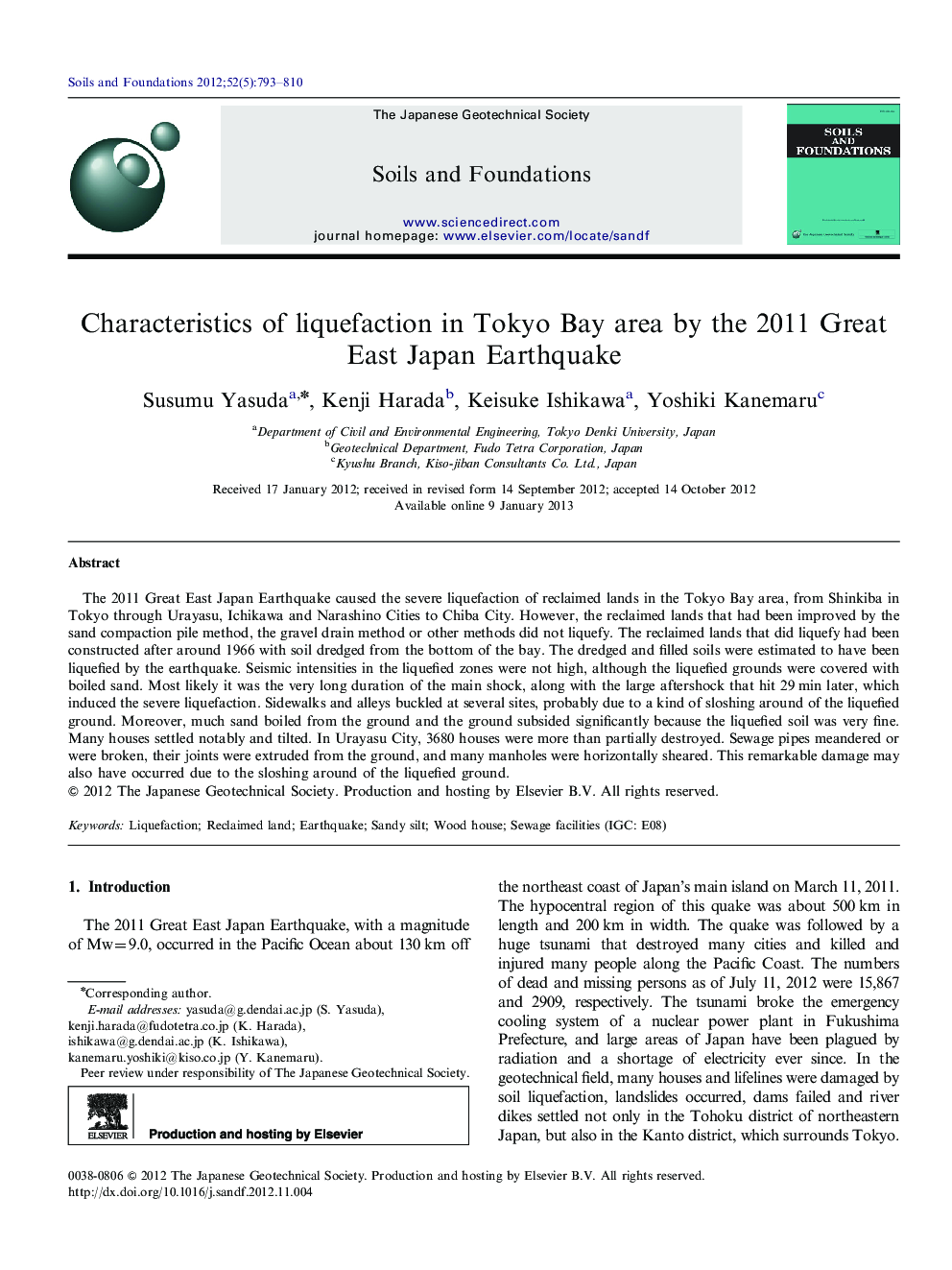| Article ID | Journal | Published Year | Pages | File Type |
|---|---|---|---|---|
| 10295680 | Soils and Foundations | 2012 | 18 Pages |
Abstract
The 2011 Great East Japan Earthquake caused the severe liquefaction of reclaimed lands in the Tokyo Bay area, from Shinkiba in Tokyo through Urayasu, Ichikawa and Narashino Cities to Chiba City. However, the reclaimed lands that had been improved by the sand compaction pile method, the gravel drain method or other methods did not liquefy. The reclaimed lands that did liquefy had been constructed after around 1966 with soil dredged from the bottom of the bay. The dredged and filled soils were estimated to have been liquefied by the earthquake. Seismic intensities in the liquefied zones were not high, although the liquefied grounds were covered with boiled sand. Most likely it was the very long duration of the main shock, along with the large aftershock that hit 29Â min later, which induced the severe liquefaction. Sidewalks and alleys buckled at several sites, probably due to a kind of sloshing around of the liquefied ground. Moreover, much sand boiled from the ground and the ground subsided significantly because the liquefied soil was very fine. Many houses settled notably and tilted. In Urayasu City, 3680 houses were more than partially destroyed. Sewage pipes meandered or were broken, their joints were extruded from the ground, and many manholes were horizontally sheared. This remarkable damage may also have occurred due to the sloshing around of the liquefied ground.
Keywords
Related Topics
Physical Sciences and Engineering
Earth and Planetary Sciences
Geotechnical Engineering and Engineering Geology
Authors
Susumu Yasuda, Kenji Harada, Keisuke Ishikawa, Yoshiki Kanemaru,
